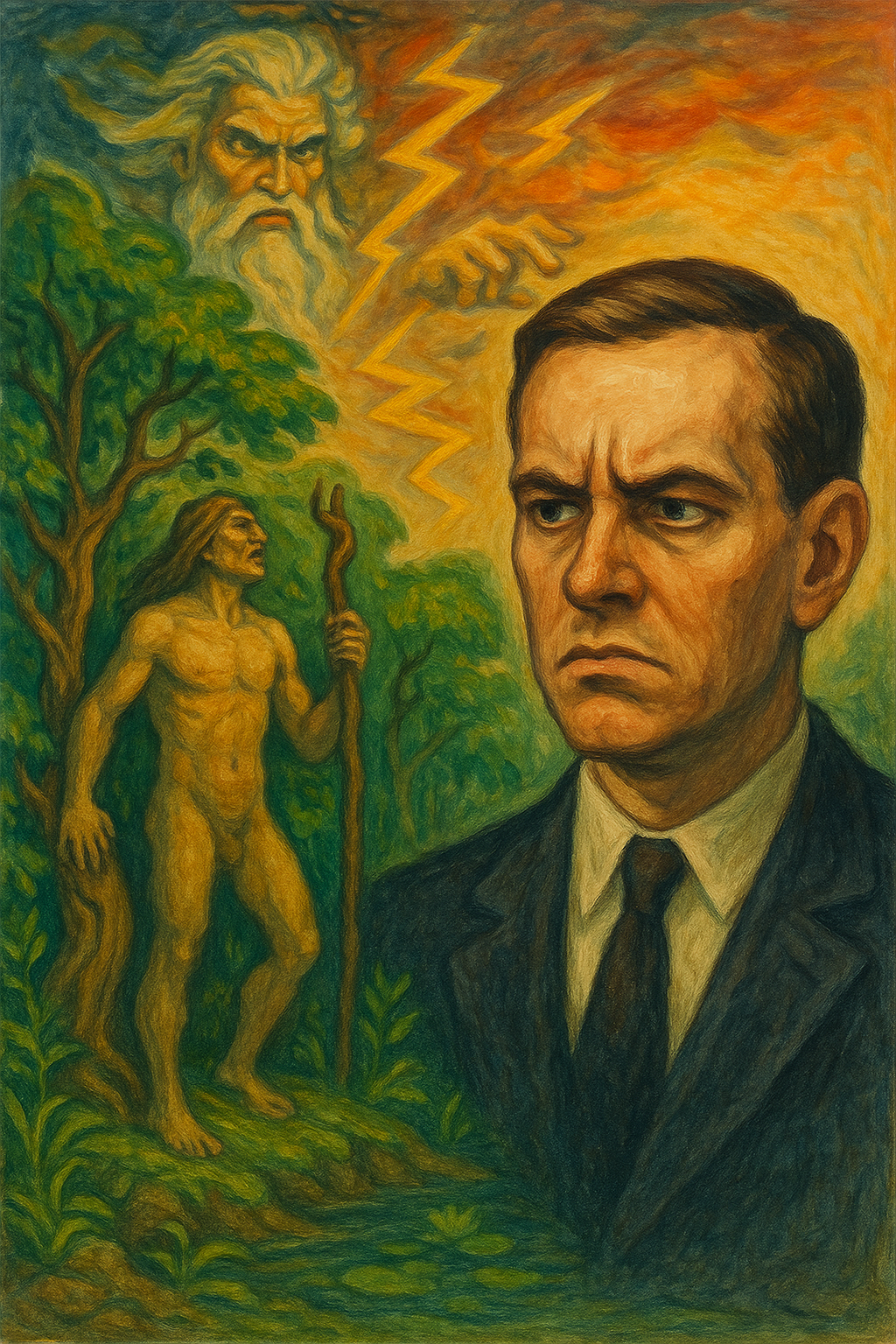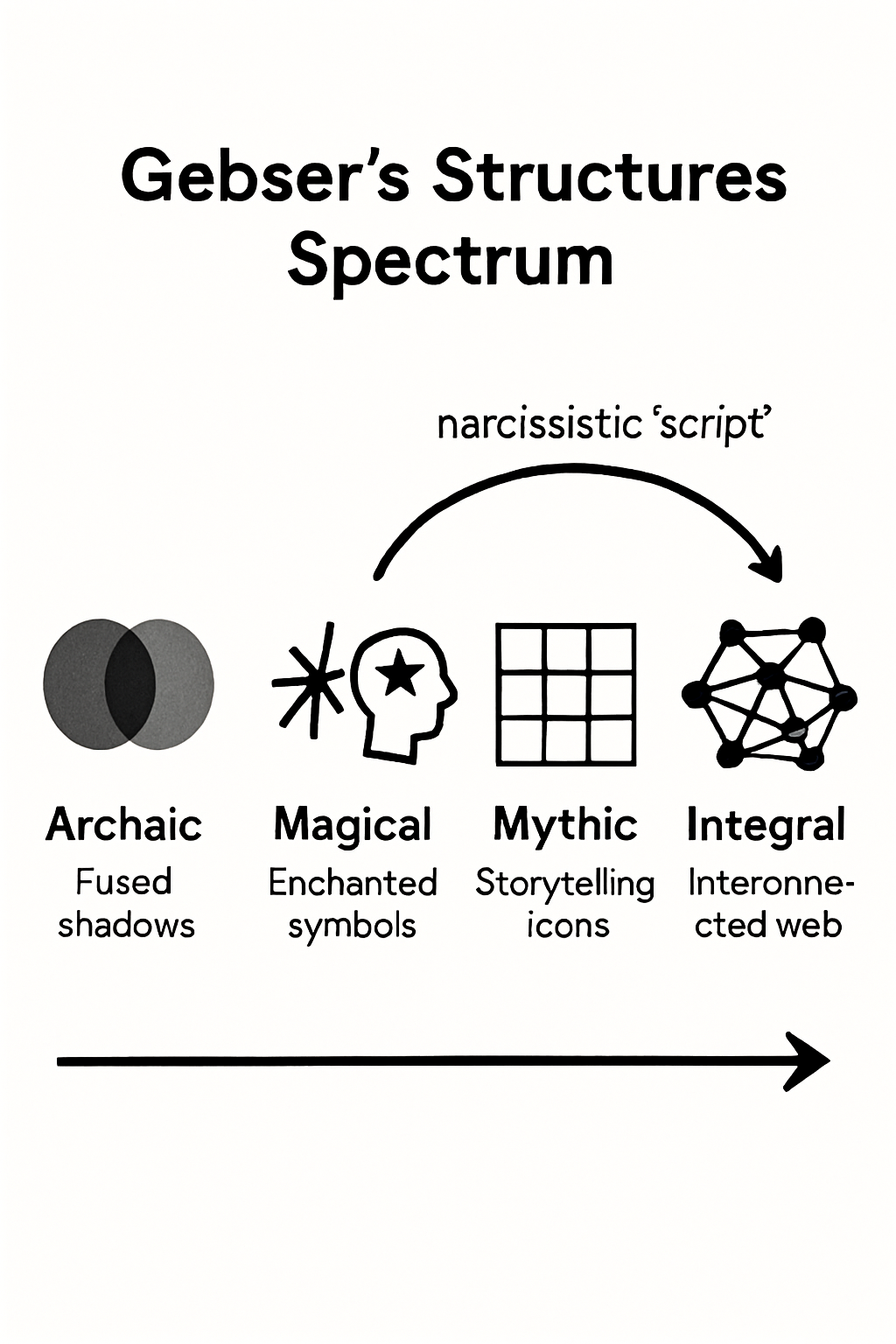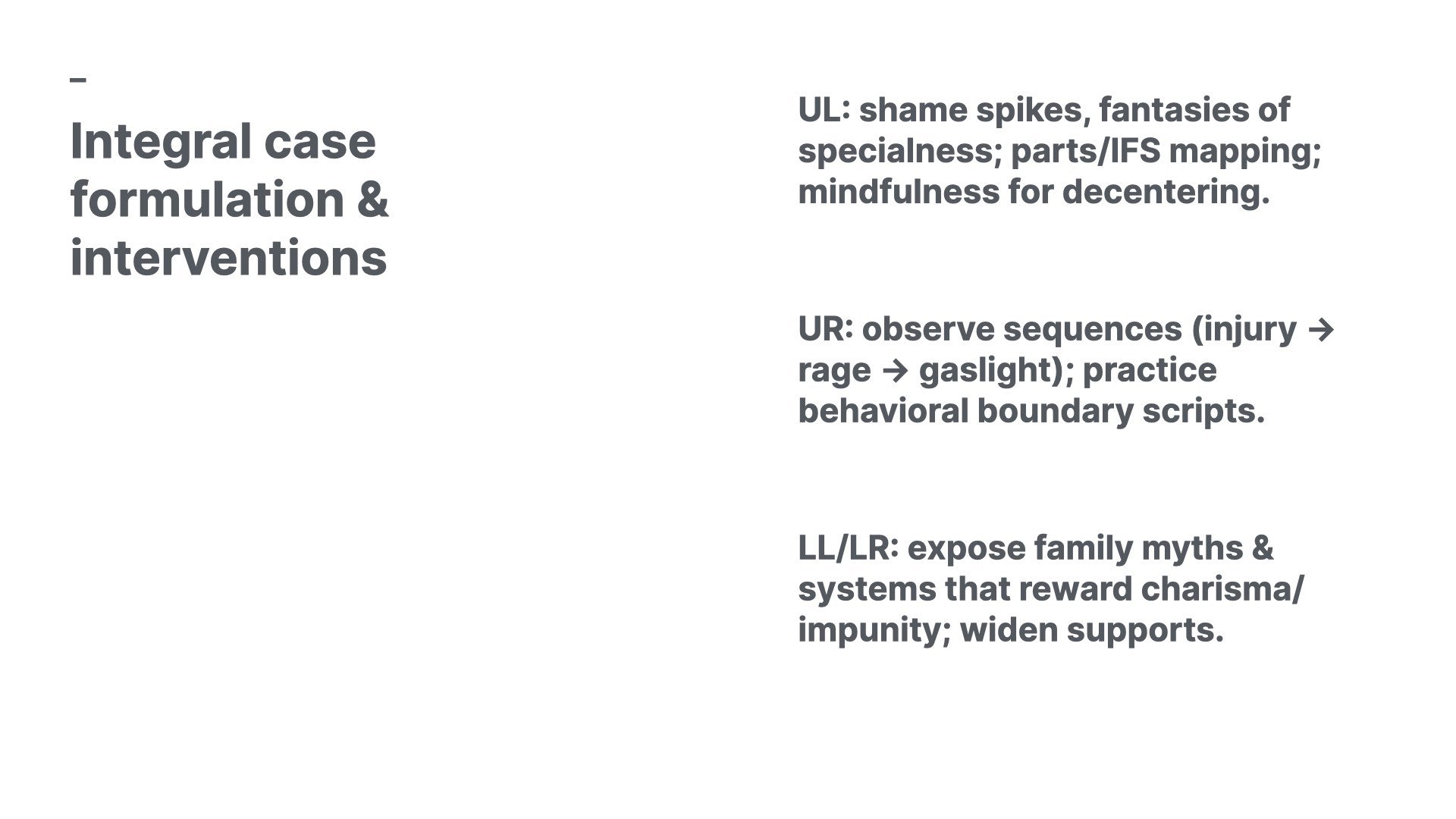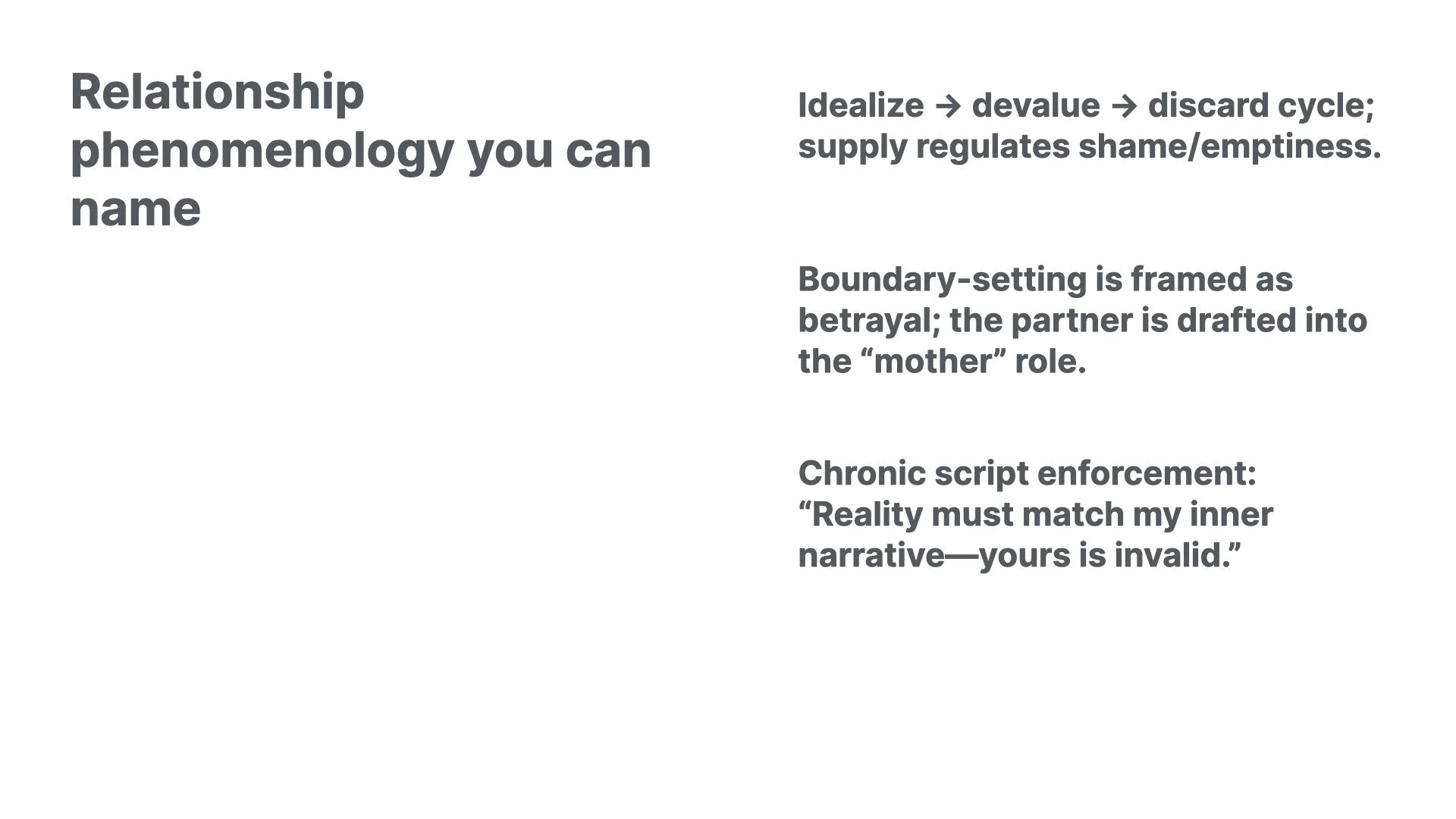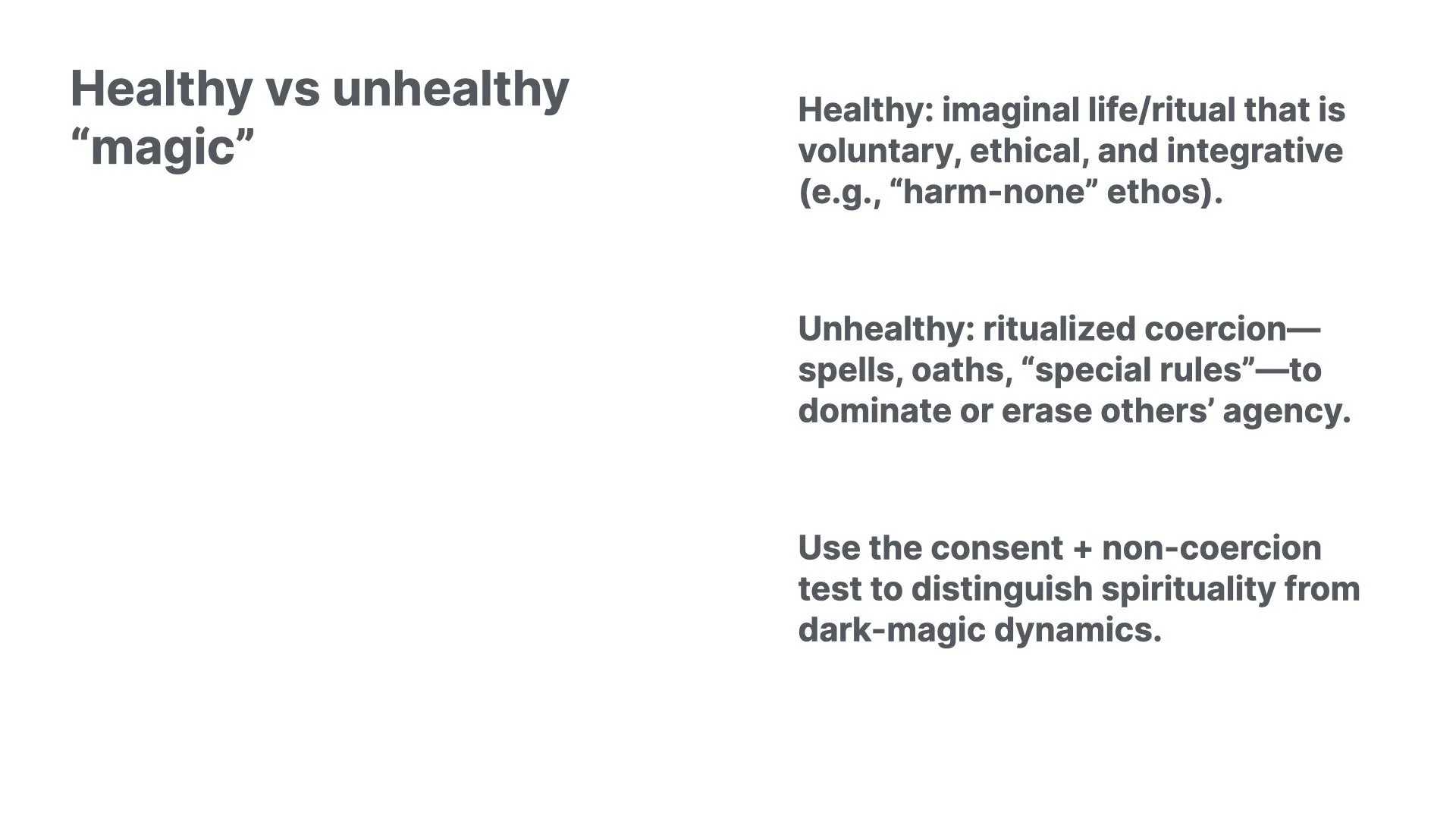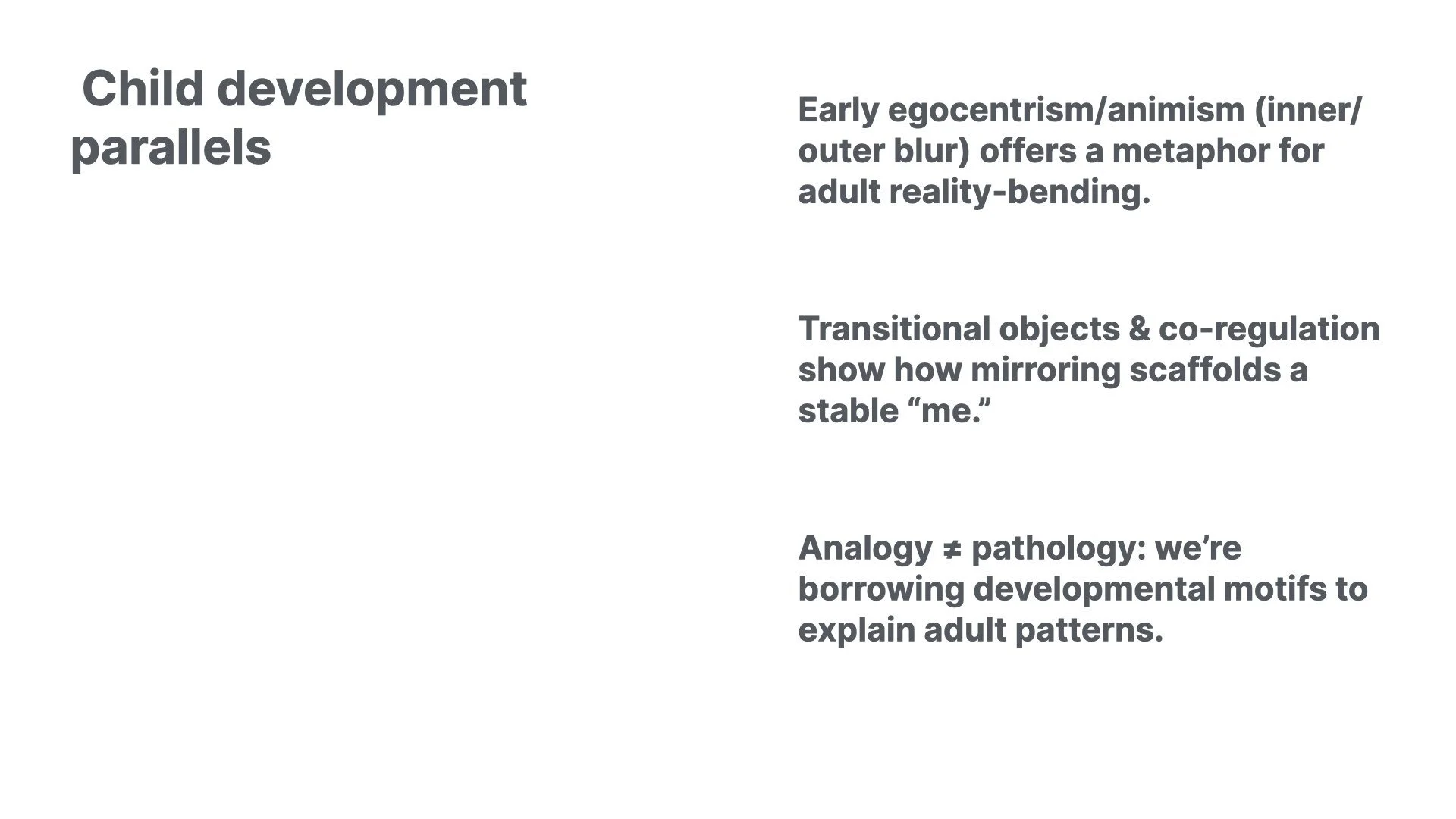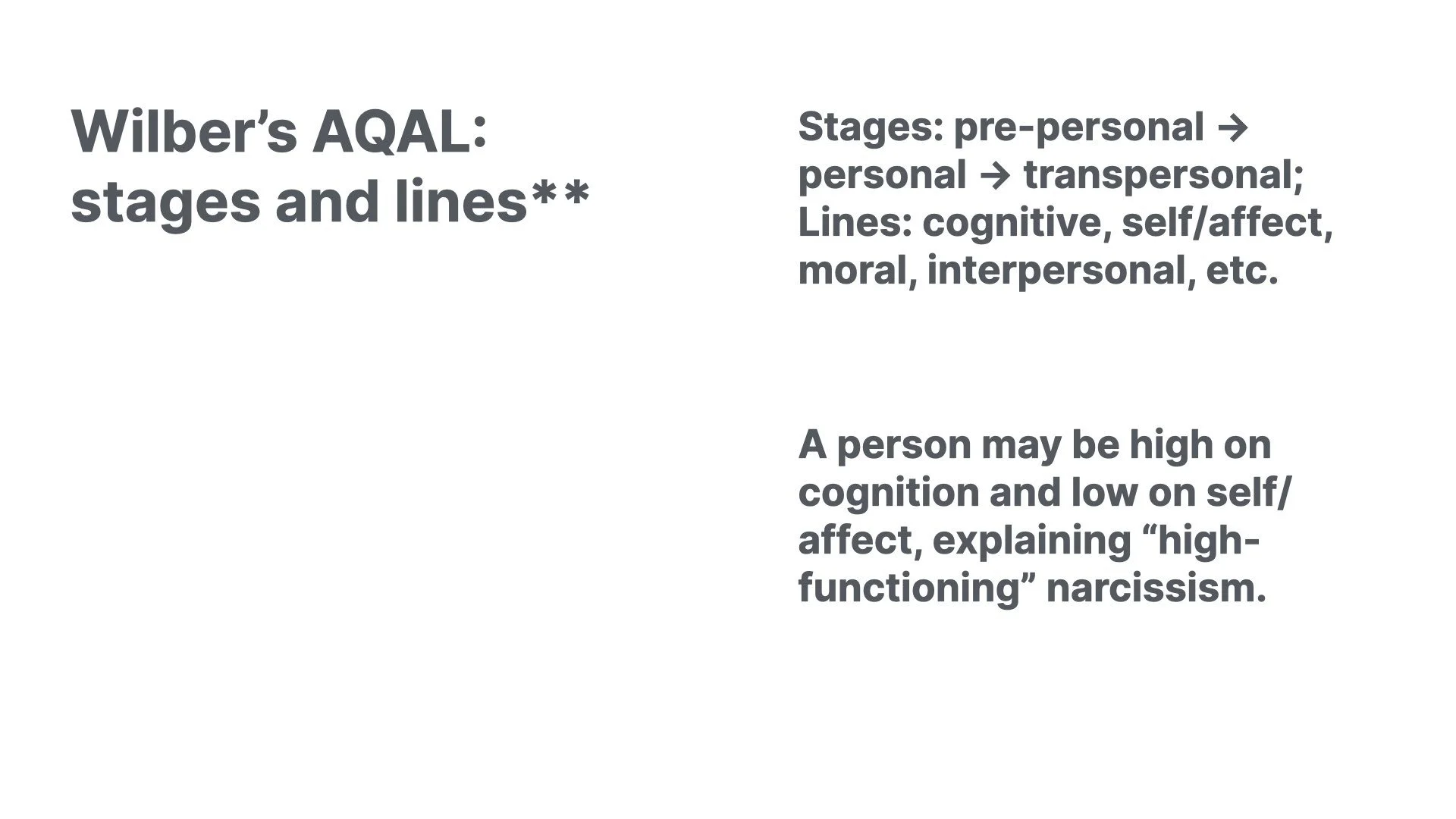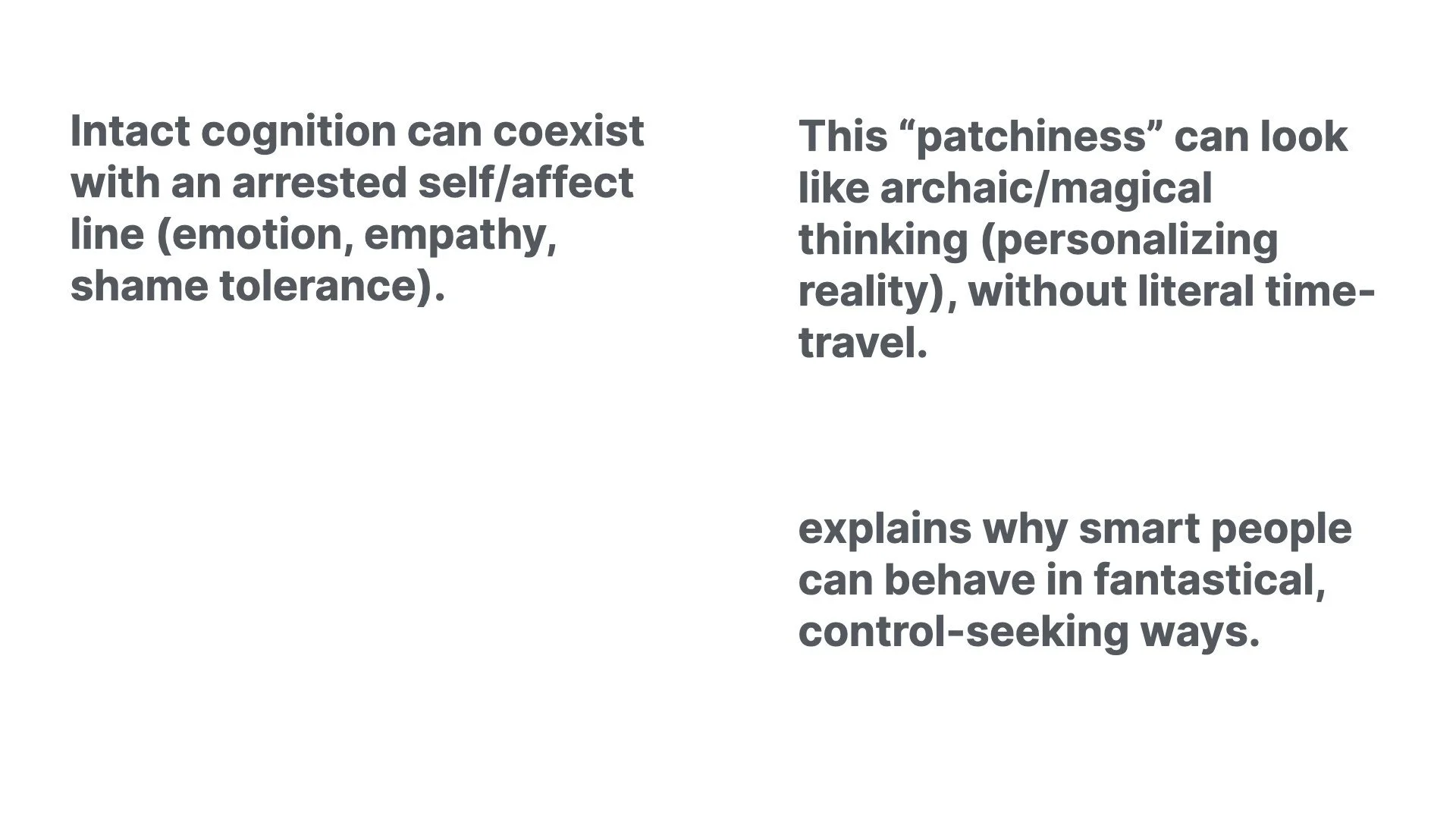Understanding Narcissism Through Developmental Stages: Insights from Ken Wilber and Jean Gebser on Uneven Development
Introduction
Hello everyone, this is Blake Anderson, a registered social worker and therapist in Toronto, Ontario. In this blog post, I explore how to understand the narcissist in terms of uneven development, borrowing from Ken Wilber's Integral Model, particularly with regards to stage development and lines of development. I also draw from Jean Gebser's approach to stage development to help understand what's going on for the narcissist and the understanding of the self. Using these models, along with other reflections, I offer insights into narcissism, developmental stages, and how uneven growth can lead to emotional immaturity despite high intellectual functioning. This perspective can help clarify the complexities of narcissistic behavior in relationships and personal dynamics.
Ken Wilber's Integral Model and Developmental Lines
Ken Wilber's approach includes the notion of different stages of development, drawing from various theorists to sketch out human evolution and growth. Many of us understand child development, such as progressing through pre-conventional, conventional, and post-conventional stages. For example, you wouldn't teach a 5-year-old chemistry or algebra, but you could introduce basic math—this illustrates how elementary stages must be mastered before advancing to more complex ones. Each stage fosters evolution and greater complexity in individuals and society.
Within this model, Wilber introduces developmental lines, where a person can progress unevenly across aspects like cognition, self, emotions, and morality. In the cognitive line, a narcissistic individual might be highly developed, functioning well in society, holding a job, and maneuvering socially. However, in their emotional and self lines, there is often arrested development, leading to a lack of self-identity, emotional awareness, and empathy. This can impair interpersonal relationships due to low shame tolerance, poor emotional regulation, and overall immaturity. Such patchwork development explains why someone might connect intellectually but exhibit deficits in the self or emotional lines—perhaps because their ego didn't fully form during growth. Reflect on relationships where intellectual compatibility exists, yet emotional depth is missing; this unevenness can create confusion.
Jean Gebser's Developmental Stages: Archaic and Magical Structures
Jean Gebser outlines stages including archaic, magical, mythic, rational, and integral. For understanding narcissism, I focus on the archaic and magical stages. The archaic stage is the primordial origin, described as zero-dimensional, non-differentiated, and formless, with no subject-object split—much like very young babies who don't distinguish between their inner world, outer world, mother, and self. Gebser likened it to a dimly lit mist, devoid of shadows, with no experience of time or space, just undifferentiated unity, akin to early infant consciousness or dreamless sleep.
The magical stage represents a mutation out of the archaic, where rudimentary self-awareness emerges, but boundaries remain permeable. This one-dimensional, pre-perspectival consciousness views everything as interconnected and infused with animistic qualities; reality is enchanted, alive, and participatory. The subject-object split is minimal, and the world relates directly to the self, as in early tribal cultures worshiping gods and nature. The ego is weak or absent, with identity tied to the tribe or collective—self, environment, animals, and weather form a single living matrix. Events and intentions intertwine magically, like rain dances believed to cause rain, or thoughts affecting reality directly. These stages highlight how earlier consciousness structures persist in us, influencing narcissistic traits where rational functioning coexists with emotional regression.
Narcissistic Script Enforcement and Magical Thinking
Narcissists often exhibit script enforcement, a compulsion for others to enact and mirror their internal narrative, echoing Gebser's magical participation. The narcissist demands conformity to their fantasy of self and world; violations trigger rage, coldness, or manipulation. For instance, if the narcissist sees themselves as always the victim, events and people must comply, distorting facts and gaslighting others to preserve the script. This mirrors Gebser's magical structure, where self and world are minimally separated, and internal intentions directly influence the outer world in an enchanted, animistic way.
For the narcissist, inner fantasy organizes the outer world not through reason or dialogue, but as unquestionable reality—projecting onto others and expecting alignment with desires. This resembles the false self requiring agreement from family or partners; failure leads to narcissistic injury, control, or withdrawal. Narcissists personalize the world: a disagreement isn't a differing perspective but a betrayal. Under stress or shame, as Wilber notes, earlier structures resurface, collapsing reality testing into magical mode. This isn't conscious manipulation but a structural tendency to mistake fantasy for truth, often linked to blurred boundaries and low ego strength. Consider how this dynamic appears in your interactions—does it involve enforced narratives lacking mutual recognition?
Conclusion and Reflections
This lens on narcissism through developmental stages reveals how unbalanced lines lead to high rationality alongside emotional underdevelopment, with archaic and magical elements persisting in consciousness. By exploring Ken Wilber and Jean Gebser, we gain deeper insights into narcissistic origins and behaviors, aiding in navigating these complexities in life and relationships. I plan more content to delve further into this intricate field. If this resonates, reflect on your own developmental lines—what areas feel uneven?
For those healing from narcissistic dynamics, consider my Scapegoat Recovery Course bundled with the Design Your Personal Manifesto Course to reclaim your narrative and build resilience. Learn more at https://www.blakeandersontherapy.com/scapegoat-recovery-bundle.


